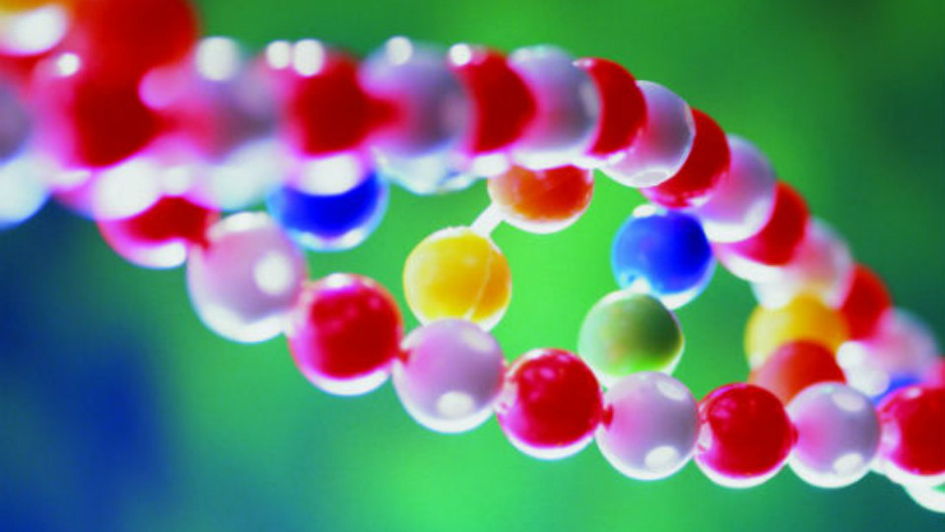
Sunday 25 April is DNA Day, which celebrates the discovery of DNA and the scientific advances made possible by uncovering this building block of life.
DNA Day celebrates two dates that are so important in cancer research – the discovery of the double-helix structure of DNA by scientists including Francis Crick, James Watson, Maurice Wilkins and Rosalind Franklin, which was published in the journal Nature on 25 April 1953, and the completion of the Human Genome Project in April 2003, after 13 years of research. This was the first time scientists had read the complete sequence of human DNA, paving the way for new discoveries about human biology.
Without understanding DNA, understanding cancer and developing new treatments for the disease would be nearly impossible. Genetics plays a huge role in treating cancer, and it’s crucial for the care of many patients with cancer to understand the genetics of their disease.
A disease of faulty DNA
Cancer is ultimately a disease of DNA. Our cells are constantly exposed to factors that can damage DNA, but they have a remarkable ability to repair mistakes when they occur – even putting cell division on hold until repairs are complete.
Cells use a complex network of signals called the DNA damage response to control the process of detecting and repairing damaged DNA. But as cancer develops, this response can become defective – making cells genetically unstable and causing them to accumulate more and more cancerous mutations.
Although defects in the DNA damage response can help cancers develop, they are also key genetic weaknesses that could be exploited to treat the disease.
Understanding DNA repair
Professor Jessica Downs, Professor of Epigenetics and Genome Stability at the ICR, is one of a group of researchers who are investigating how the DNA damage response works in healthy cells and how it can become defective in cancer.
Cancer cells with defects in their DNA damage response become more reliant on other systems to repair their DNA. So they could be susceptible to drugs that block these systems. Understanding how cancer becomes reliant on these repair systems could also help researchers identify new vulnerabilities in cancer that could be targeted with new treatments.
Researchers at the ICR famously applied this principle, known as synthetic lethality, in the development of drugs called PARP inhibitors, which are now used as a treatment for cancers with mutations to the BRCA genes.
Now Professor Downs and her team are studying a substance in cells called chromatin – a mixture of DNA and proteins that helps package DNA to prevent damage. She is interested in how the proteins within chromatin help to support DNA damage repair in healthy cells – and what happens to chromatin during the development of cancer.
Her lab is studying a particular protein complex within chromatin called SWI/SNF. This complex plays a role in winding or unwinding DNA so it can be copied or repaired, which can go wrong in cancer.
Professor Downs explains: “The winding and unwinding of DNA is a tightly regulated process in cells, and the proteins controlling it play an important role in preventing and repairing wear and tear to DNA. The SWI/SNF protein complex helps maintain DNA in cells but it’s inactivated in roughly 20 per cent of cancers. Our lab is trying to understand why this protein complex is so important in the DNA damage response network, and what goes wrong in cancer.”
By studying the role SWI/SNF plays in our cells, Professor Downs and her team have started to identify potential weaknesses that might be targeted by new drugs.
She is now working with colleagues in our Cancer Therapeutics Unit to develop compounds to target these proteins to treat cancer.
Our world-leading cancer research relies on the generosity and dedication of the thousands of individuals, organisations and companies that support our work. Help us today so that we can keep learning more about DNA damage and cancer.
Donate now
Radiotherapy and DNA damage
As well as designing drugs to target DNA repair mechanisms, researchers at the ICR are also interested in ways of triggering more DNA damage to kill cancer cells.
Radiotherapy and some chemotherapies work by causing so much genetic damage that cancer cells cannot survive, but cancers can become resistant to these treatments by finding ways of repairing their DNA.
Professor Downs is working with Dr Navita Somaiah, a clinician scientist at the ICR and an expert in radiotherapy, to understand how cells respond to DNA damage caused by radiotherapy.
They are investigating how radiation-induced damage is repaired in different genetic contexts. It is possible that drugs that block the DNA damage response could make cancer cells more sensitive to radiotherapy, by stopping them from repairing the damage it causes. That could in turn improve outcomes for patients.
Dr Somaiah says: “Targeting the DNA damage response could re-sensitise cancer that has become resistant to radiotherapy, which would be of great benefit to patients.”
By understanding and exploiting cancer’s dependency on DNA damage repair, our researchers are using their knowledge of DNA to turn a strength of cancer into a weakness, which could open up new avenues of treatment and give hope to many patients with the disease.
comments powered by